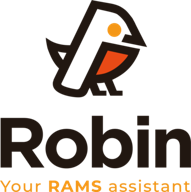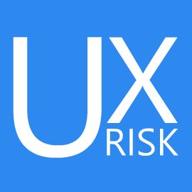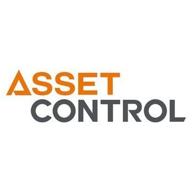Operational Risk Management
The Art of Operational Risk Management: Mitigation Techniques for Compliance
Operational risk management lies at the heart of every successful organization's governance, risk, and compliance strategy. In today's complex business landscape, where regulatory frameworks continue to evolve, businesses must implement effective operational risk mitigation techniques to ensure compliance and safeguard their operations. This article explores the key principles, strategies, and frameworks that drive operational risk management, empowering organizations to navigate the challenging terrain of regulatory compliance with confidence.
Unlocking Success: Effective Operational Risk Management Strategies
Operational risk management is a proactive approach that encompasses the identification, assessment, and mitigation of risks arising from internal processes, systems, and external factors. Effective operational risk management strategies serve as a foundation for a robust compliance framework. By establishing clear objectives, defining risk appetite, and implementing risk control measures, organizations can minimize the likelihood of operational disruptions, financial losses, and reputational damage.
Building Resilience: Operational Risk Management Frameworks for Regulatory Compliance
Operational risk management frameworks provide organizations with a structured approach to managing risks and ensuring compliance with regulatory requirements. These frameworks incorporate industry best practices, risk assessment methodologies, and control mechanisms tailored to the organization's specific needs. By integrating risk identification, measurement, monitoring, and reporting processes, these frameworks enable organizations to navigate the complex web of regulatory obligations effectively.
An essential component of operational risk management frameworks is the establishment of key risk indicators (KRIs) and the implementation of risk appetite statements. KRIs are quantifiable metrics that provide early warning signals, enabling organizations to proactively manage risks before they escalate. By setting risk appetite statements, organizations define the level of risk they are willing to accept and align their risk management strategies accordingly, ensuring compliance with regulatory expectations.
Collaborative Approach: The Role of Stakeholders in Operational Risk Management
Operational risk management is not a solitary endeavor; it requires collaboration and engagement across the organization. Senior management, risk officers, business units, and other stakeholders play critical roles in fostering a risk-aware culture and embedding operational risk management practices into day-to-day operations. Clear communication, training programs, and accountability mechanisms are vital to ensure that employees understand their roles in managing risks and complying with regulatory requirements.
In conclusion, operational risk management serves as the bedrock for achieving regulatory compliance and mitigating potential operational disruptions. By implementing effective operational risk mitigation techniques, organizations can proactively identify, assess, and manage risks, thereby safeguarding their operations and enhancing their overall resilience. Through the adoption of robust operational risk management frameworks, organizations can navigate the ever-changing regulatory landscape with confidence, achieving compliance while also unlocking strategic opportunities for growth and success.


3 Review
Robin RAMS has been designed by RAMS engineers to support Reliability, Maintainability and Safety analyses the easy way. Forget overcomplicated interfaces and focus on RAMS work. Robin RAMS is the perfect tool to support your efforts towards aerospace compliance and first-class system design. Robin RAMS offers five modules: Fault Tree, FRACAS…
Read more about this company

3 Review

3 Review
OptiOp allows you to easily create and maintain your evaluation forms; perform evaluations quickly and simply across any number of skills or media channels; meet with employees and give feedback and record and track action items; measure the turnaround time for giving feedback and close the loop with employees signing off on receiving feedback.


3 Review
At RiskTeq, we are passionate about safety. We're also passionate about software. Our thoughtful uniting of these two passions has resulted in a safety and risk management framework that delivers simplicity in a complex environment to embed your risk management culture in your organisation.


3 Review
Corizance is an award winning risk management platform that uses AI for connected risk management. Conventional risk management requires you to have multiple applications, therefore costing you time and money to gain any insight of significance. With Corizance, you can track all forms of non-financial risk in just one place, and in real-time. Achieve…
Read more about this company

3 Review
Relyence Software is reliability and quality software platform including FMEA, FRACAS, fault tree, reliability prediction, and RBD (Reliability Block Diagram).


3 Review
Cura's Enterprise Risk Management (ERM) software solutions enable organizations to better manage risk and take advantage of opportunities relating to business objectives and goals. Cura provides a powerful and flexible framework for managing risk, allowing organizations to identify, analyze, evaluate and treat both risks and opportunities in order to…
Read more about this company

3 Review
DCDR is the ideal platform for anyone implementing a risk-led security program and looking for an ESRM software tool to support this. DCDR is fast, robust and functional and was originally built with the security risk manager in mind.


3 Review
Operational risk management functionality built on an enterprise-wide foundation covering organizational, process, and data management functionality

3 Review
IRIS Intelligence provides award winning software and ancillary services for managing risk in the enterprise.

3 Review
Quick Risk Matrix is a software for rapid, easy, and accurate design of risk assessment matrices.


3 Review
SECTARA Is The Most Advanced And Logical Security Risk Management Platform Available Today. Taking a standards-based approach to security risk management means that some users will already be familiar with the elements involved in the process. Where SECTARA differs is how we've put them together, how powerful each component is, and how easy it is to…
Read more about this company

3 Review
AQMetrics provides integrated compliance and risk management software to asset managers, investment managers and broker/dealer companies.


3 Review
UXRisk is a modern risk management solution for the global market made easily available for every kind of organisation and ensuring that all users are engaged.


3 Review
AC Risk Data Manager was built to meet the specific data requirements on time series data of risk management and new regulation such as FRTB, BCBS 239, Stress Testing and IPV.


3 Review
Analytica is a platform for building models and decision-support applications. You use intuitive influence diagrams to structure models visually -- the way you think. Scale up rapidly and flexibly with Intelligent Arrays. Manage risk and uncertainty with efficient scenario and Monte Carlo analysis to find robust decision strategies. Discover what…
Read more about this company
3 Review
NARIS GRC is a GRC platformthat connects all GRC components within the organization and enables comprehensive management reports.

3 Review
OptiModel will get you on the right path with tools that right-size for your business.


3 Review
SmartCompliance is the #1 certificate of insurance management software for brokers, insurance consultants, and risk managers. Our easy-to-use certificate tracking software helps insurance professionals streamline their COI processes by automating certificate of insurance tracking and collection, eliminating manual data entry, and ensuring vendor…
Read more about this company- Operational risk mitigation techniques for compliance involve implementing measures to identify, assess, and control risks that can impact an organization's operations and compliance with regulations. Some common techniques include conducting risk assessments, implementing internal controls and procedures, ensuring adequate training and awareness programs, establishing robust incident management processes, and regularly monitoring and reviewing compliance activities.
- Effective operational risk management strategies encompass various elements to identify, assess, and manage risks within an organization. These strategies include setting clear objectives and risk tolerance, establishing a risk governance structure, implementing risk assessment methodologies, promoting a risk-aware culture, utilizing risk control measures, conducting regular audits and reviews, and leveraging technology and data analytics to enhance risk management capabilities.
- Operational risk management frameworks provide a structured approach to managing risks and ensuring regulatory compliance. These frameworks incorporate industry best practices, risk assessment methodologies, and control mechanisms tailored to an organization's specific needs. By integrating risk identification, measurement, monitoring, and reporting processes, these frameworks enable organizations to navigate the complex web of regulatory obligations effectively and establish a proactive risk management culture that aligns with regulatory expectations.
- Stakeholders play a crucial role in operational risk management. Senior management, risk officers, business units, and other stakeholders contribute to fostering a risk-aware culture and embedding operational risk management practices into day-to-day operations. Clear communication channels, comprehensive training programs, and accountability mechanisms are vital for ensuring that employees understand their roles in managing risks and complying with regulatory requirements. Collaboration and engagement among stakeholders enhance the effectiveness of operational risk management efforts across the organization.

